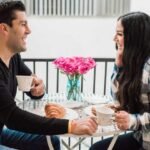A basic medical technique called phlebotomy entails taking a patient’s blood. This procedure is essential for many medical uses, such as blood donation, therapeutic blood removal, blood component monitoring, and diagnostic testing. Phlebotomy is crucial to obtaining fast and reliable medical information, whether you are having a normal check-up or need particular diagnostic procedures. This process aids physicians in the efficient diagnosis, management, and treatment of many illnesses. You may understand phlebotomy’s value in healthcare and ensure a more comfortable procedure by being aware of its goal, procedure, and potential side effects.
Purpose and Importance of Phlebotomy in Healthcare
Phlebotomy performs a number of vital tasks in the medical field. The collection of blood samples for diagnostic testing is the main goal. These samples are used to assess blood components, including red and white blood cell counts, cholesterol, and glucose levels. This information is crucial for the diagnosis of illnesses like anemia, diabetes, and infections. Additionally, phlebotomy is essential for tracking blood components over time, which aids medical professionals in properly managing chronic illnesses. Therapeutic phlebotomy is sometimes used to treat diseases like polycythemia vera or to eliminate excess iron from the blood. Furthermore, phlebotomy-enabled blood donation is essential to preserving a steady supply of blood for transfusions. This process is an essential component of contemporary healthcare because it helps with disease detection, management, and therapy.
Typical Duration of a Phlebotomy Procedure
Phlebotomy procedures take a short while to complete, though this depends on how many blood samples are required. The average time to draw blood from one tube is less than ten seconds. In the event that three tubes or more of samples are needed, the average time for extracting blood may be between 26 and 44 seconds. All in all, though, the phlebotomy procedure typically takes five to ten minutes, including preparatory and post-procedure care. Assuring the patient’s identity, outlining the process, choosing the right vein, sticking the needle in, taking blood, taking the needle out, pressing down on the puncture site, and labeling the samples are all included in this. Even though the actual blood draw only takes a short while, the meticulous procedures guarantee both patient safety and the accuracy of the samples obtained.
Potential Side Effects and Risks
Although phlebotomy is generally safe, there are a few possible hazards and side effects to be mindful of. Soreness at the needle site, bruising, and discomfort are common side effects. Some patients, especially those who are nervous or have a history of fainting during blood draws, may feel dizziness, nausea, or fainting during or after the procedure. Rarely, phlebotomy can lead to more serious risks, such as infection at the puncture site or nerve damage if the needle punctures a nerve. In order to reduce these hazards, phlebotomists employ sterile equipment, adhere to tight guidelines for skin antisepsis, and make sure that needle insertion procedures are followed. You must get in touch with your healthcare professional if you have any unexpected symptoms or lingering discomfort following a phlebotomy procedure.
Tips for a Positive Patient Experience
Various actions can be made to guarantee a great phlebotomy process experience. To allay any fears and give the patient a better understanding of what to expect, first go over the process with the patient in advance. The use of appropriate patient identification techniques is necessary to guarantee safety and avoid mistakes. Throughout the process, make sure the patient is at ease and that their privacy is protected. Creating a calm atmosphere, such as arranging a phlebotomy chair for comfort, can ease tension and enhance the whole experience. Provide specific directions for what to do after the procedure, such as applying pressure to the puncture site, drinking plenty of water, and taking a nap if necessary. Instructions for follow-up treatment can reassure patients and help avoid complications. These actions help to make the phlebotomy procedure go more smoothly and comfortably.
Conclusion
By delivering precise blood samples for diagnostic testing, illness management, and treatment, phlebotomy is an important medical practice that is vital to the healthcare industry. It will be easier for you to recognize its importance if you are aware of the procedure, time frame, possible adverse effects, and methods for improving the patient experience. Healthcare professionals can help patients feel more comfortable during phlebotomy by adhering to the suggested guidelines.
















